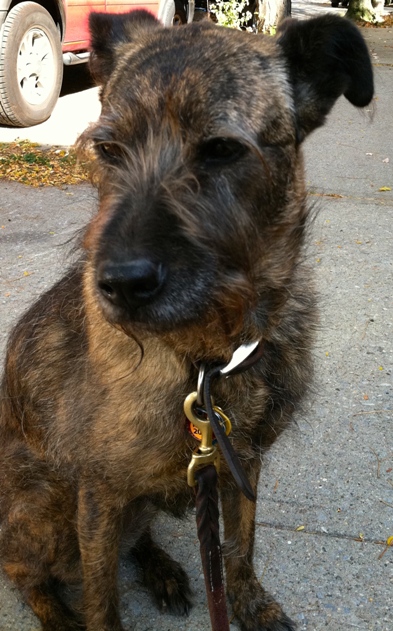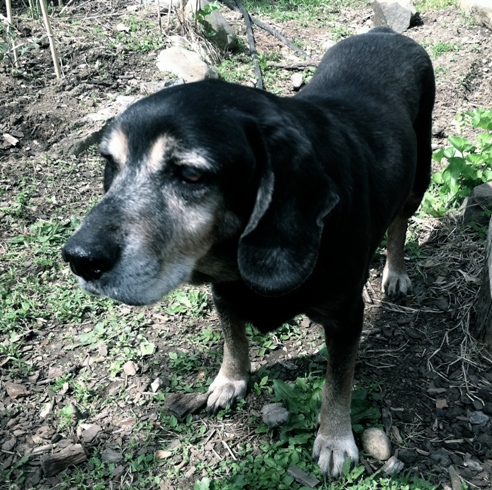View this post on Instagram
*Editor’s note: Elephant Journal articles represent the personal views of the authors, and can not possibly reflect Elephant Journal as a whole. Disagree with an Op-Ed or opinion? We’re happy to share your experience here. This website is not designed to, and should not be construed to, provide medical advice, professional diagnosis, opinion or treatment to you or any other individual or animal, and is not intended as a substitute for medical or professional care and treatment. For serious.
This is one view. We are a community, not one voice. You are welcome to share yours: elephantjournal.com/post
~
I didn’t want to write this.
I learned this information many years ago, from my spiritual teacher, Shanta. When she shared it, I immediately knew it to be true. It made so much sense in light of everything I’d been learning from her.
Ever since, I’ve been hoping to see this point of view enter the social conversation. Yet I’ve been waiting in vain. I felt had to speak up for the animals and for the humans who want to do what is best for them.
I am writing now because, while I adore watching televised veterinary shows, I flinch every time I see doctors I respect and admire euthanizing animals as if it were the only option. I’ve also noticed a recent trend online of sharing photos of a pet’s last day alive before a scheduled euthanizing. I am afraid that this trend, well-meaning as it is, is further solidifying a practice that should have been questioned a long time ago.
Pet euthanizing is a tender topic. Our pets offer us unconditional love that often goes far beyond the love we receive from our own kind. I get that connection. I’ve been devastated by the loss of a pet more than once. My beloved Rosebud passed away over two years ago and I still can hardly manage to speak about it.
It’s a nightmare to realize that maybe we’ve done something that was not in the highest good of our beloved pets. I’m sorry to have to share a point of view that might be upsetting to many.
Please understand that there is no blame here. I know that those who euthanize their pets wish to do right by them. They don’t want to see their pets suffer.
They are following an accepted practice, supported by veterinarians, family, friends—basically, everybody. I’ve never heard a single comment against the practice as it pertains to aged or ill animals. Not to euthanize is widely regarded as the crueler option.
There have been pets euthanized in my own immediate family. I am part of this, and not above it. Pet ownership is a personal topic and a mostly private experience. Things can get complicated. Every situation is a little different, and we all do the best that we can. So please hear me out.
The spiritual truth, as I learned it from my teacher, Shanta, is that, just like us humans, pets are here on earth to learn. Like us, they are here to go through the full gamut of the experiences of life.
Death is a part of life.
Just like being born, and all that other good stuff that’s part of being alive, dying is an important life experience. Illness is an important life experience.
When we abbreviate our pets’ natural experience of death and dying, they lose out on one of the lessons that they came here to learn. Just as they are coming to a completion, the last lesson is cut short.
This means that they must start all over again. They have to come back, and experience a full life all over again in order to achieve the experience of death and dying that they were meant to have.
Not wanting to see a pet suffer is a noble thought. And yet we must honestly ask ourselves if this is to protect us, or them? After all, most animals encounter death with the same calm, unflinching presence with which they face life. Their death, like their birthing, is mostly calm, accepting and, well, natural.
We sometimes mistakenly interpret the natural shutting down of the body’s systems as suffering. Our approach to human birth and death is fraught with fear and discomfort and loaded with medical interventions. Thankfully, our awareness is shifting to acknowledge other, more natural ways of birthing and dying, such as at-home births and end of life hospice care.
There is no one answer for every situation. Sometimes a C-section can be a life-saving procedure for a pregnant mother. At other times it may be more of a convenience or a commodity. The key is to have more information and options to help us make an informed choice. It is my hope that this growing awareness of our human options around life transitions can be extended to include our pets, to also allow them the experience of natural death in a loving setting.
Of course, it can be a tremendous amount of work to see a pet through the final stage of life. For those who may be unable to care for a dying pet, there is no shame or blame in that. Sometimes our human priorities simply don’t allow us to give a needy pet the care it requires. It would be humane to create hospices for pets, so that they, too, could die a peaceful, pain-free death.
This is a wonderful idea for someone who would like to create a groundbreaking career in pet care. We have doggie daycare, pet groomers, walkers and babysitters, why not pet hospice? Some kindhearted souls already deliberately choose aged pets from animal shelters to offer them a peaceful last chapter of life. A pet hospice would create another option.
We had three wonderful dogs in our family.
One Christmas eve day our dog Penguin’s worsening symptoms of old age reached its nadir. She was 19 years old, and experienced complete incontinence and inability to stand up. We happened to be over 1,000 miles away with no option to travel on Christmas eve day. With our consent, those caring for her took her to the vet, where she was euthanized. It was not the way I wished it would be, and I regret it in many ways.

My sweet Rosebud (pictured above) experienced a tragically sudden onset of renal failure. She passed away three days later. It was unbearably sad for me to let her go. Yet for her, it was quite calm. I brought her home from the vet. It was autumn and she planted herself in the yard, where she sat, her beautiful fur ruffling in the breeze, until she finally let go.
I still miss her. I am crying as I write this.

Barkie (above) lived to the great old age of 21. When he could no longer manage the three steps from the side door to the backyard, we built him a shelf in the basement where he could come and go through a doggie door we put into one of the basement windows. His world became more and more circumscribed. He was blind and could barely hobble. Yet he was blessed to leave of his own volition, in his own time.
Our pets’ lives are gifts of the heart. Their deaths, too, have so much to teach us.
Be open to receive their final gifts. Your life will be so much richer for it.
Rosebud died as she lived, a gentle, wild and free spirit. I am so grateful I gave her the chance to live out her final days in the garden, head lifted to the breeze, smelling the world on the wind.
We never thought Barkie would live so long; his leave-taking extended over a period of years. We continued to make adjustments to accommodate his changing needs, a lesson in compassion that I will always be grateful for. A psychic once told me that Barkie was afraid to die, having earlier witnessed another dog die a violent death. His behavior seemed to back that up, and I am so glad that we didn’t “push him out the door” before he was ready to go.
I know that many sensitive souls reading this will be glad of the validation of what they may already feel. This information changes the way we see our pets. When end of life care is an important part of living with our pets, we may even need to rethink the type of animal we invite into our lives.
Rosebud and Barkie’s natural deaths were not easy, yet they gave me peace of mind and heart. I shed tears of joy and gratitude to be able to give voice to our pets’ need to experience the fullness of death and dying. Our pets are in our care, dependent upon us for life and death. Allowing them the full arc of their earthly experience is a gift we can give both to them, and to ourselves as well.


 Share on bsky
Share on bsky




Read 176 comments and reply